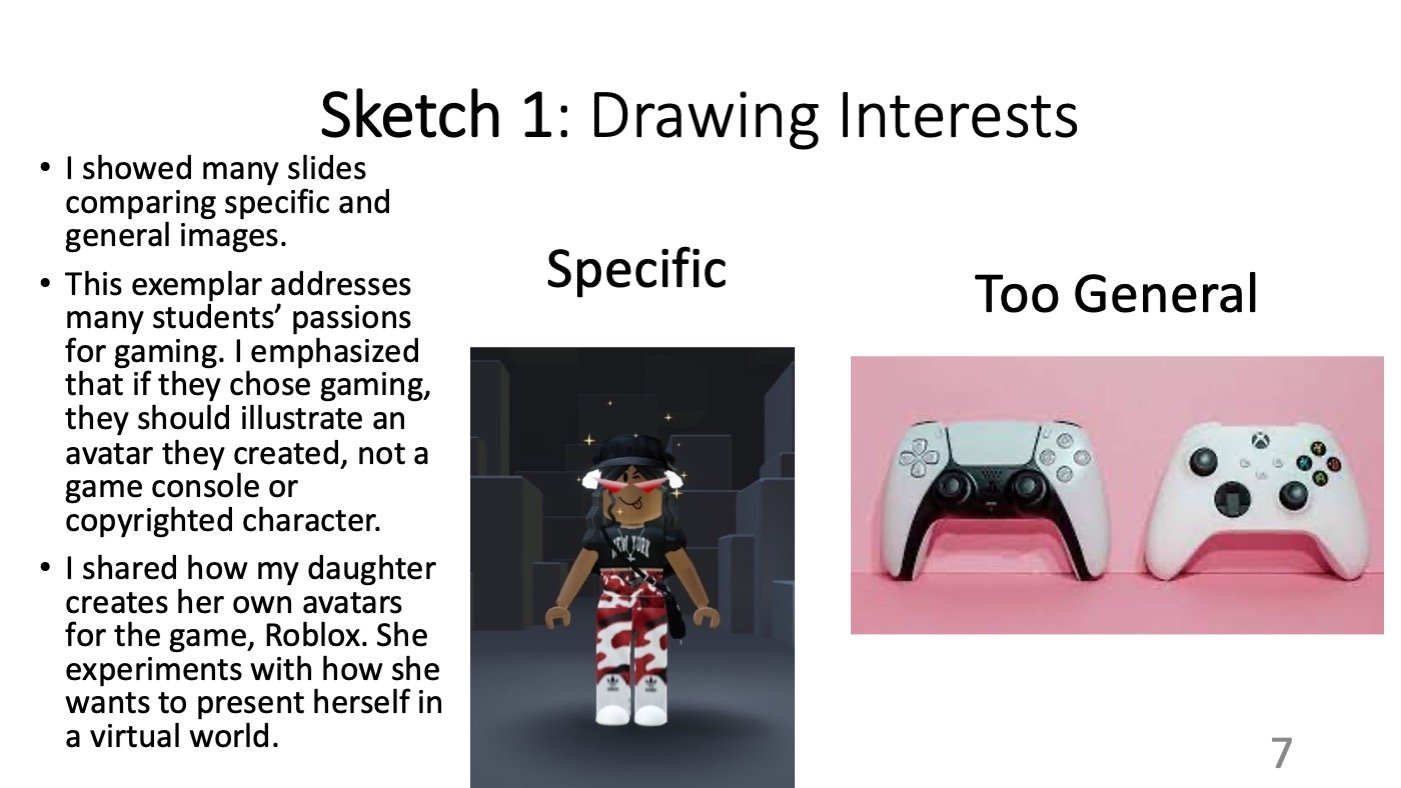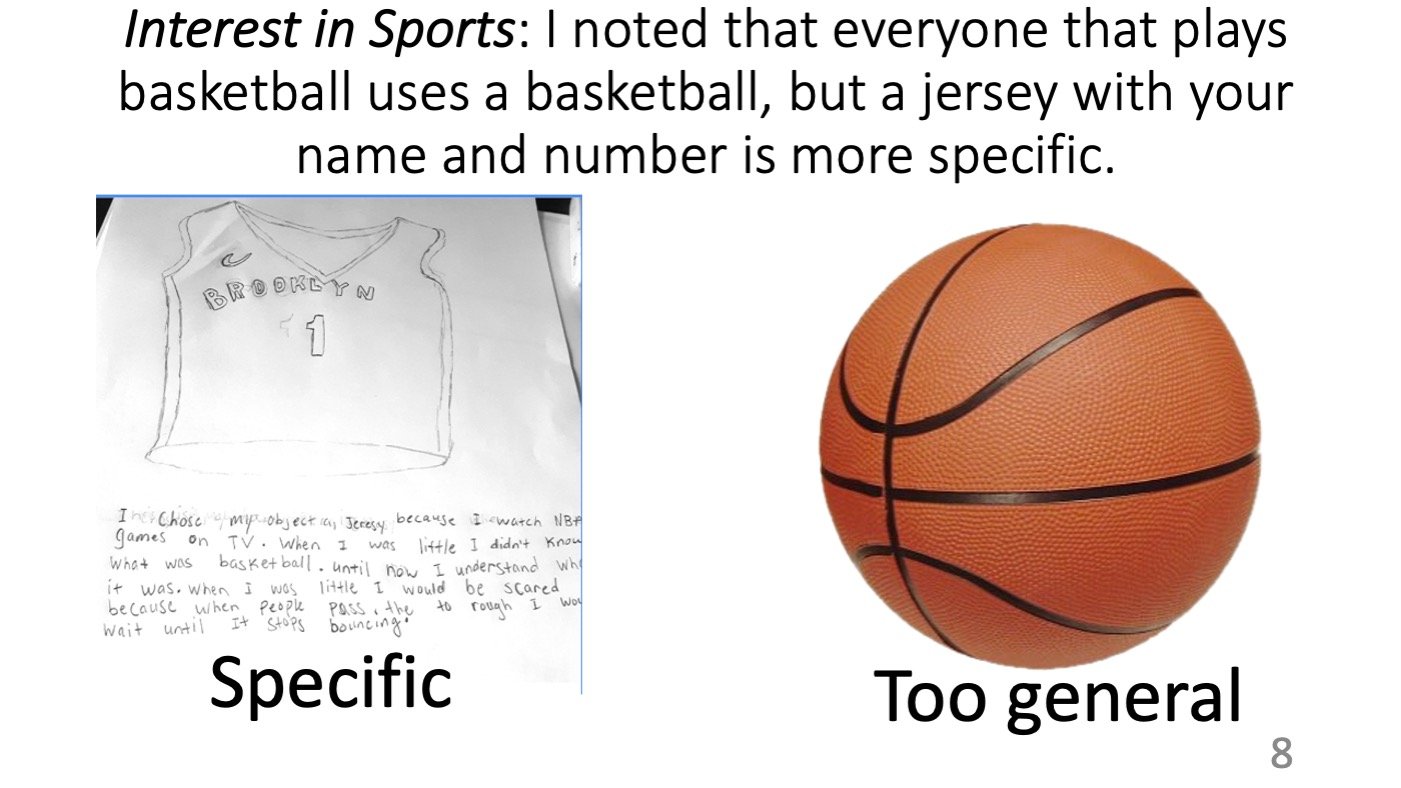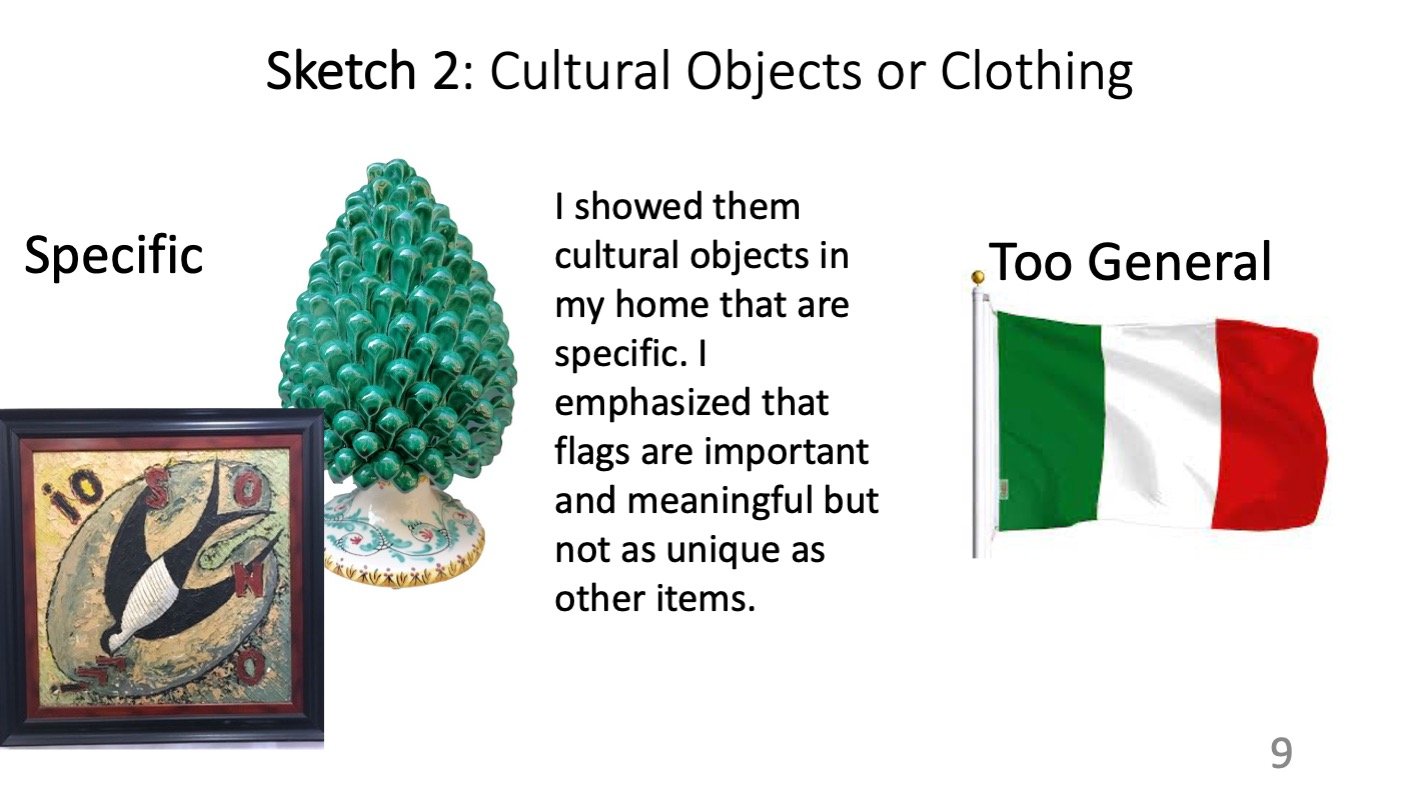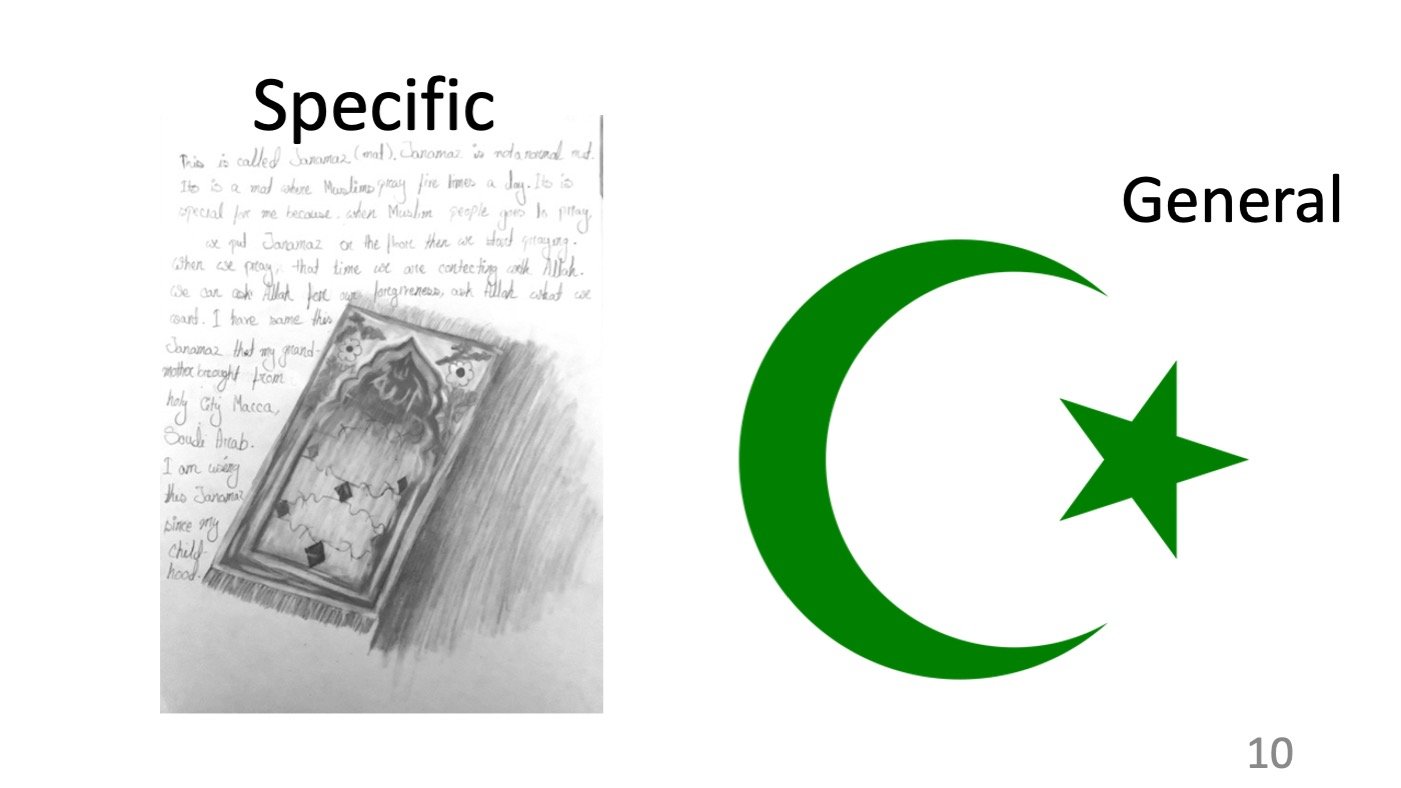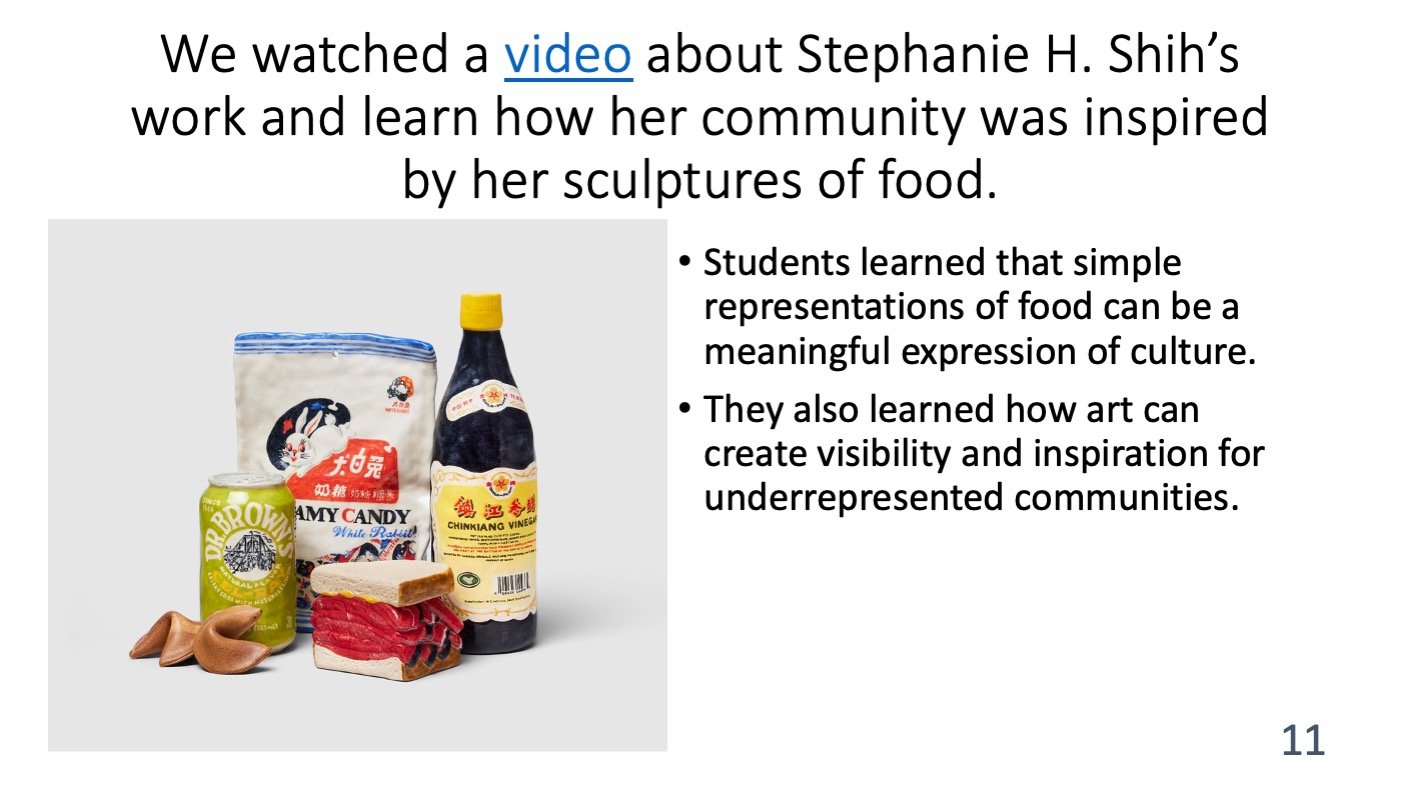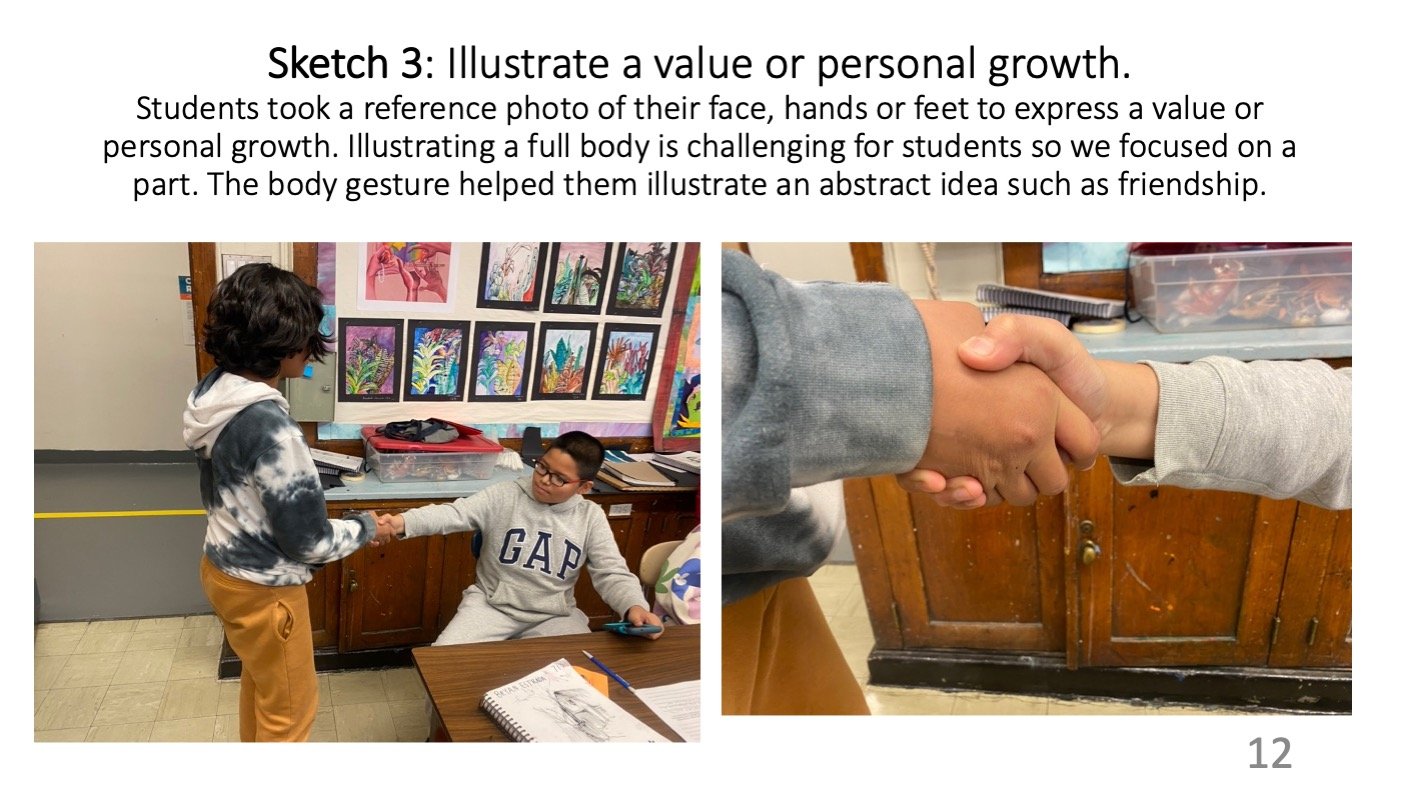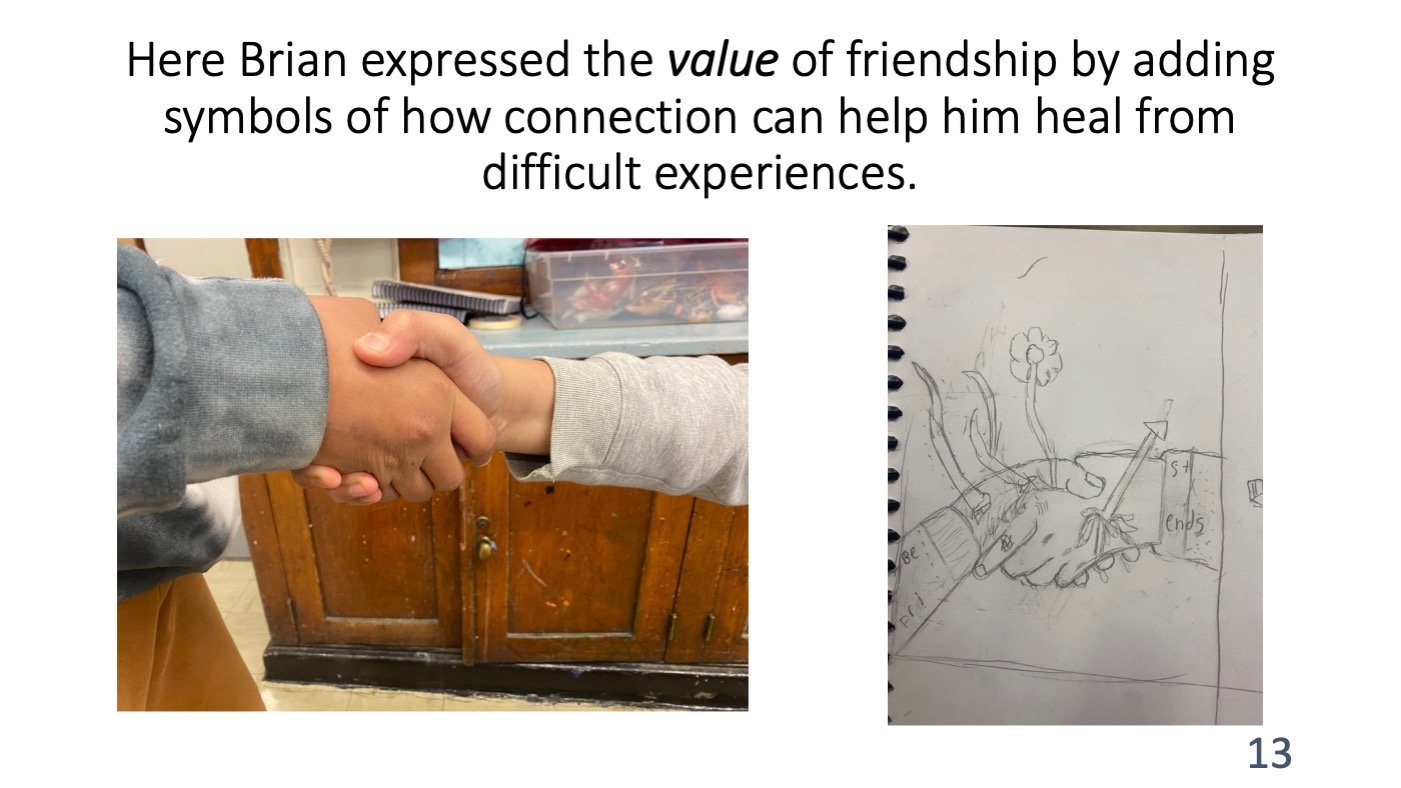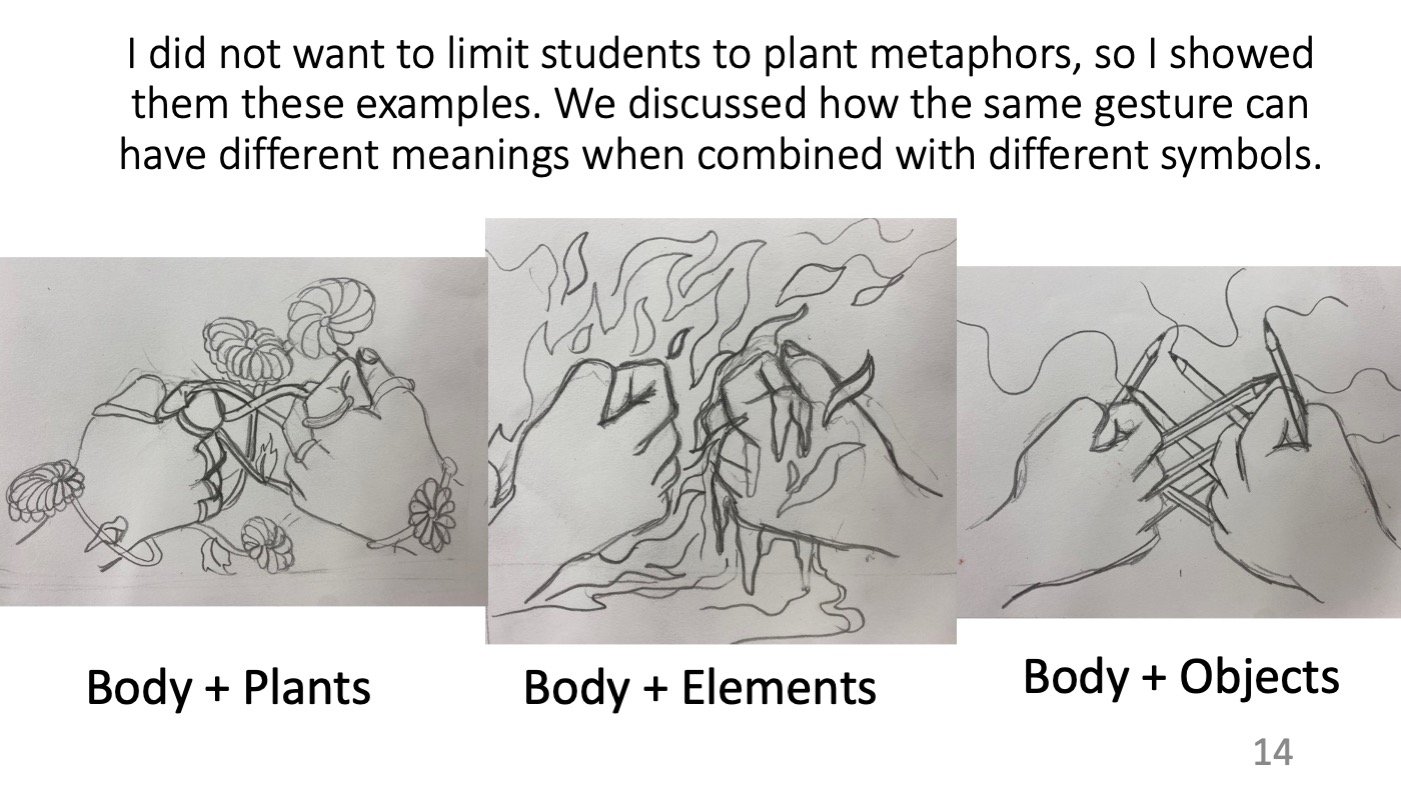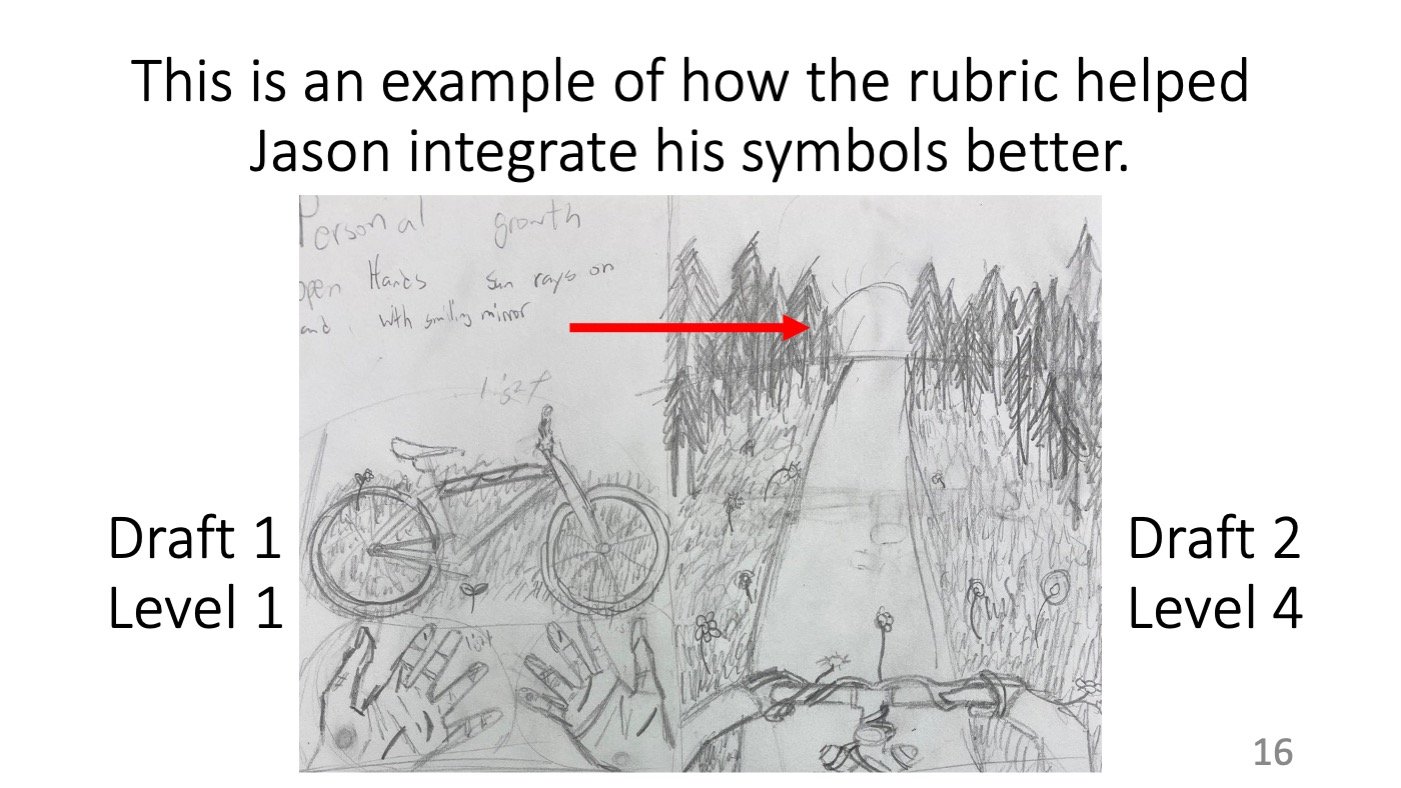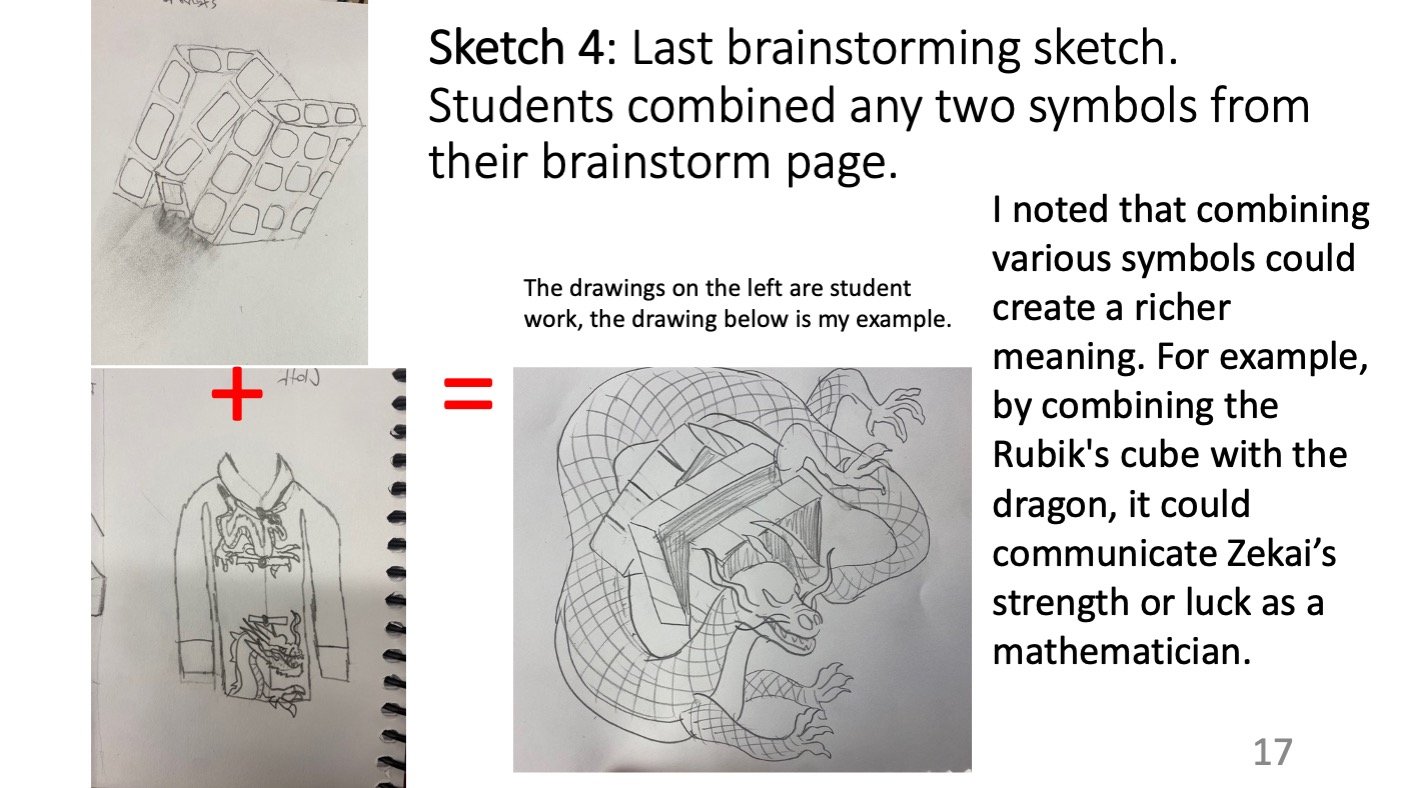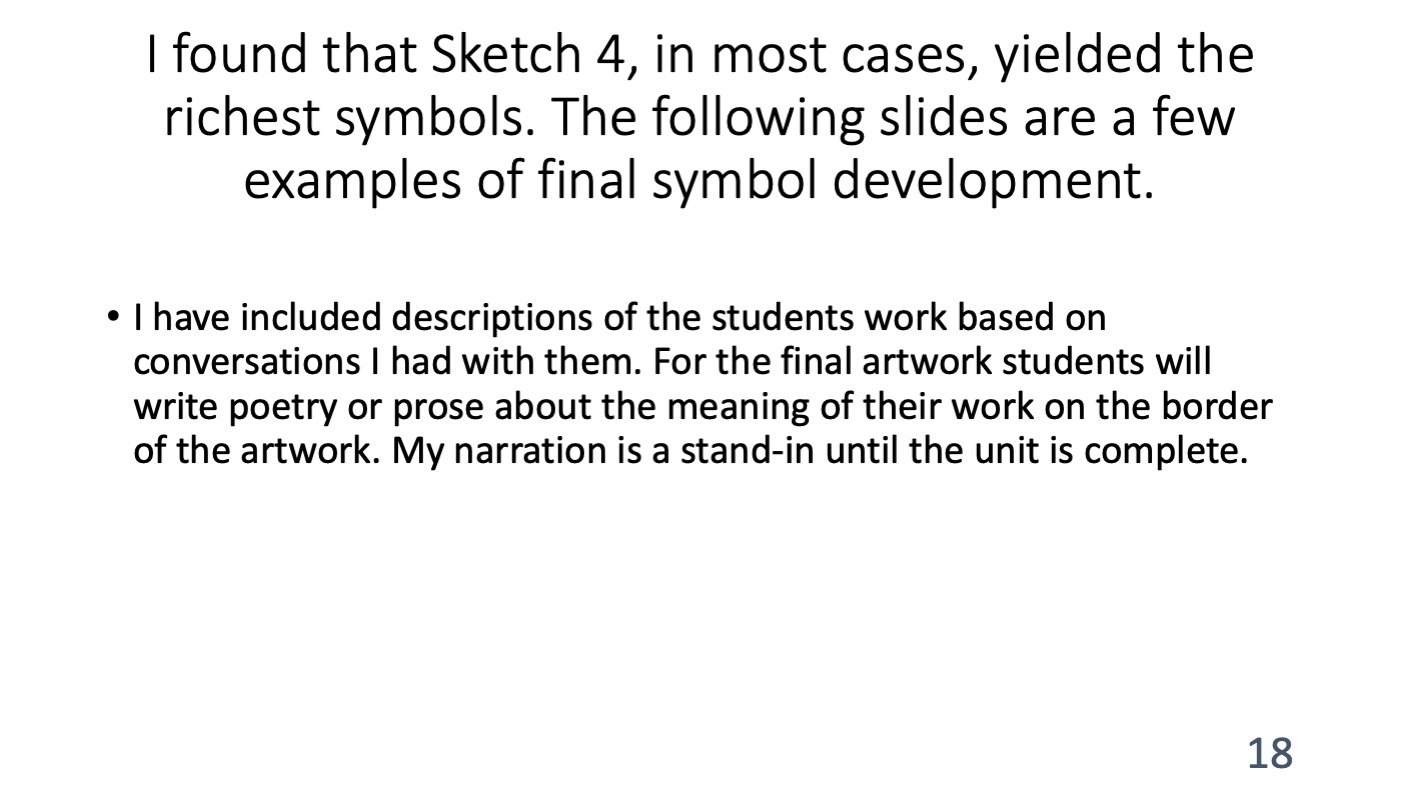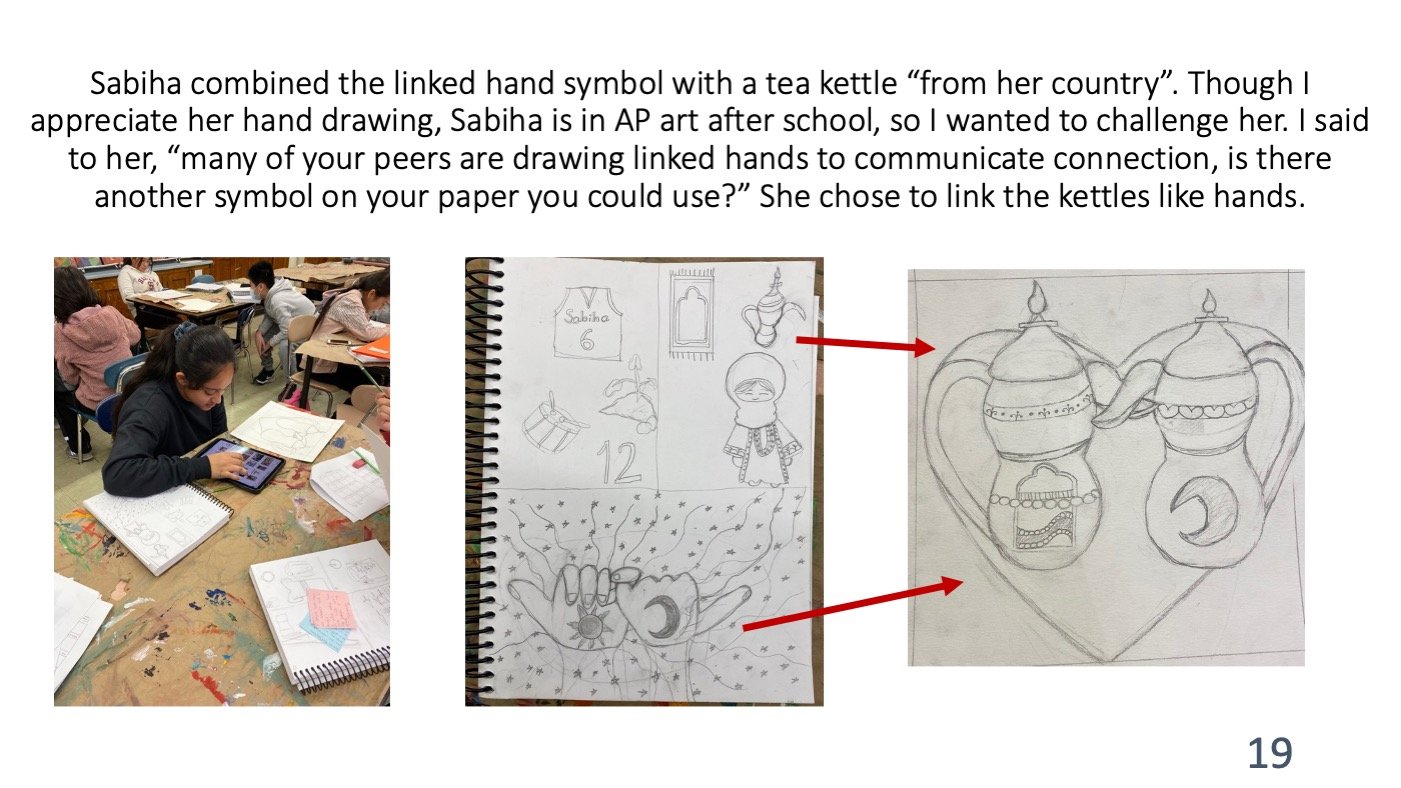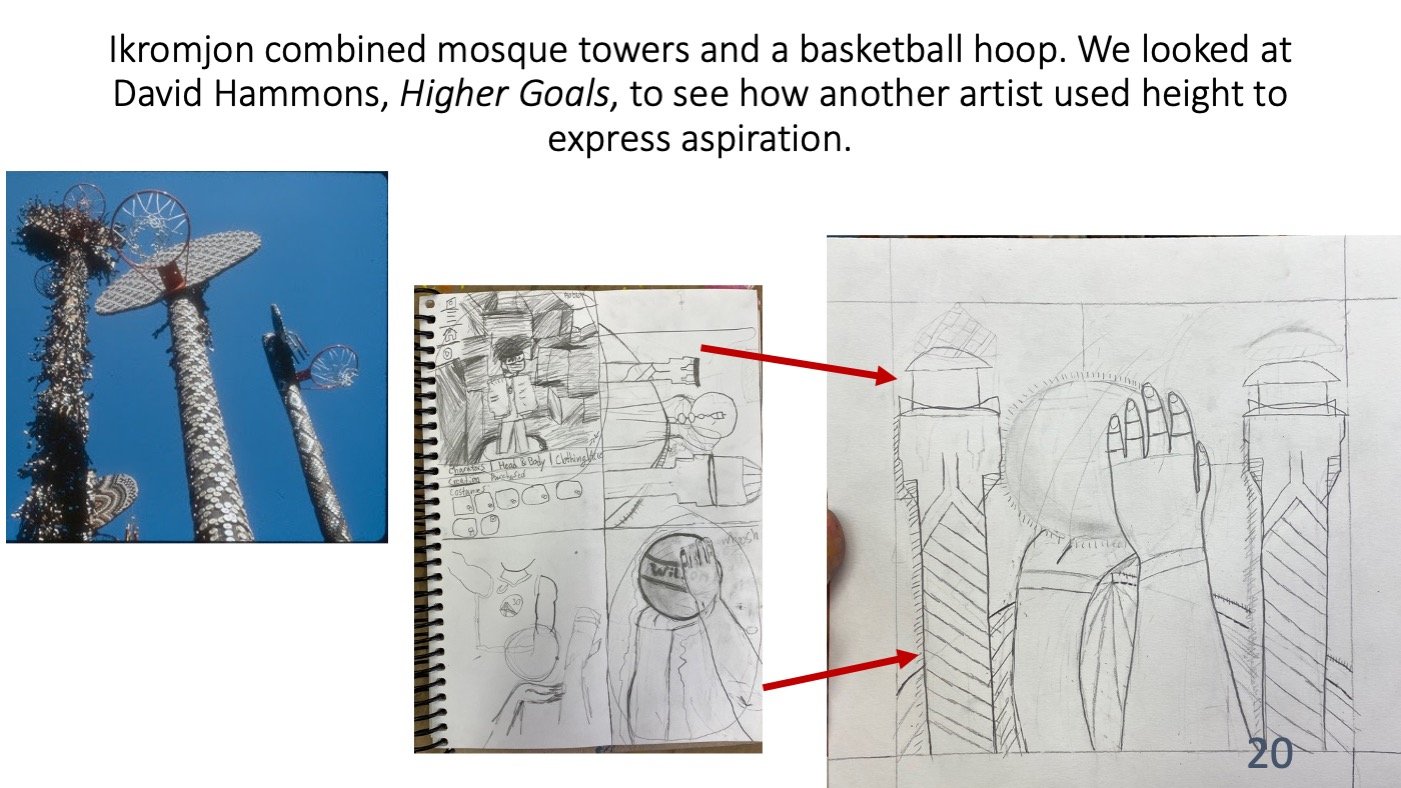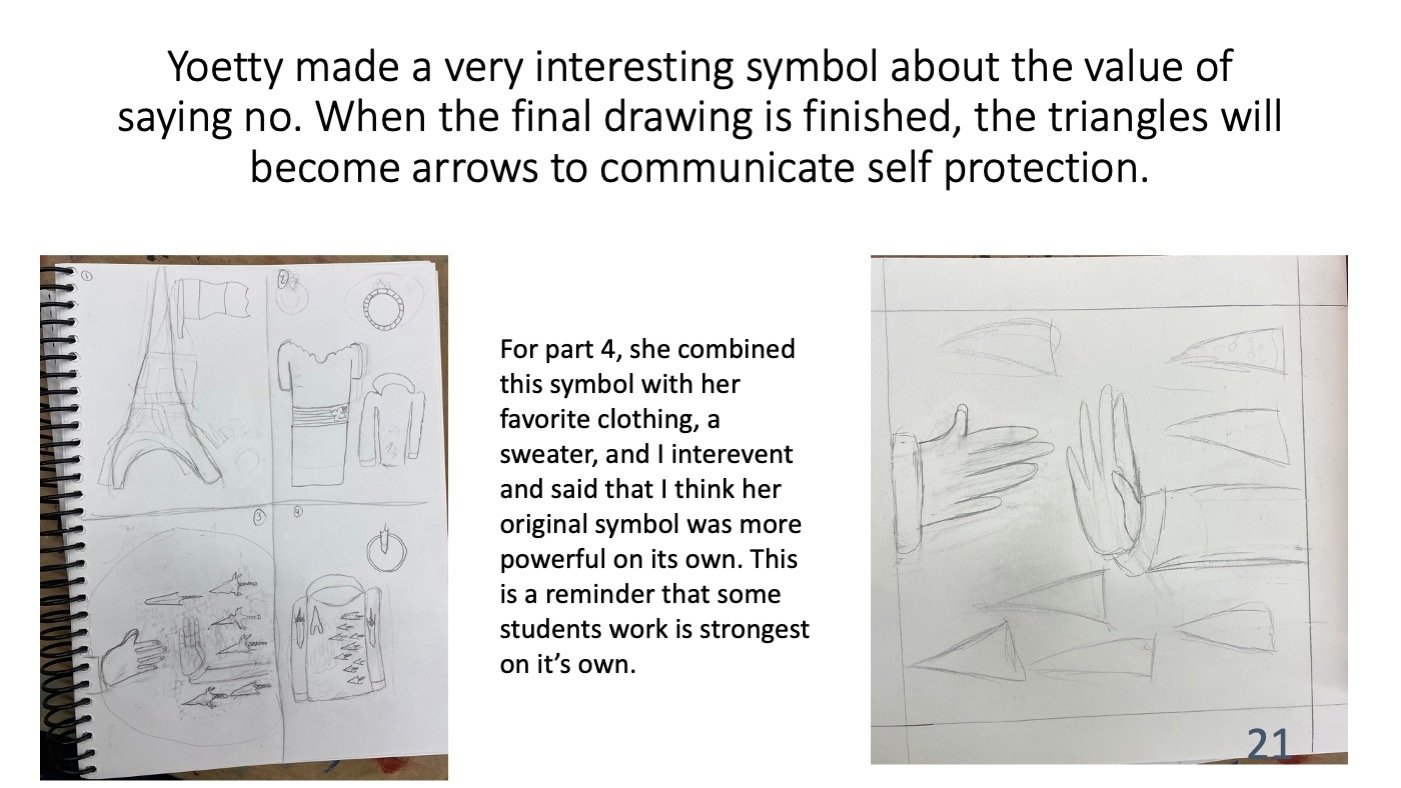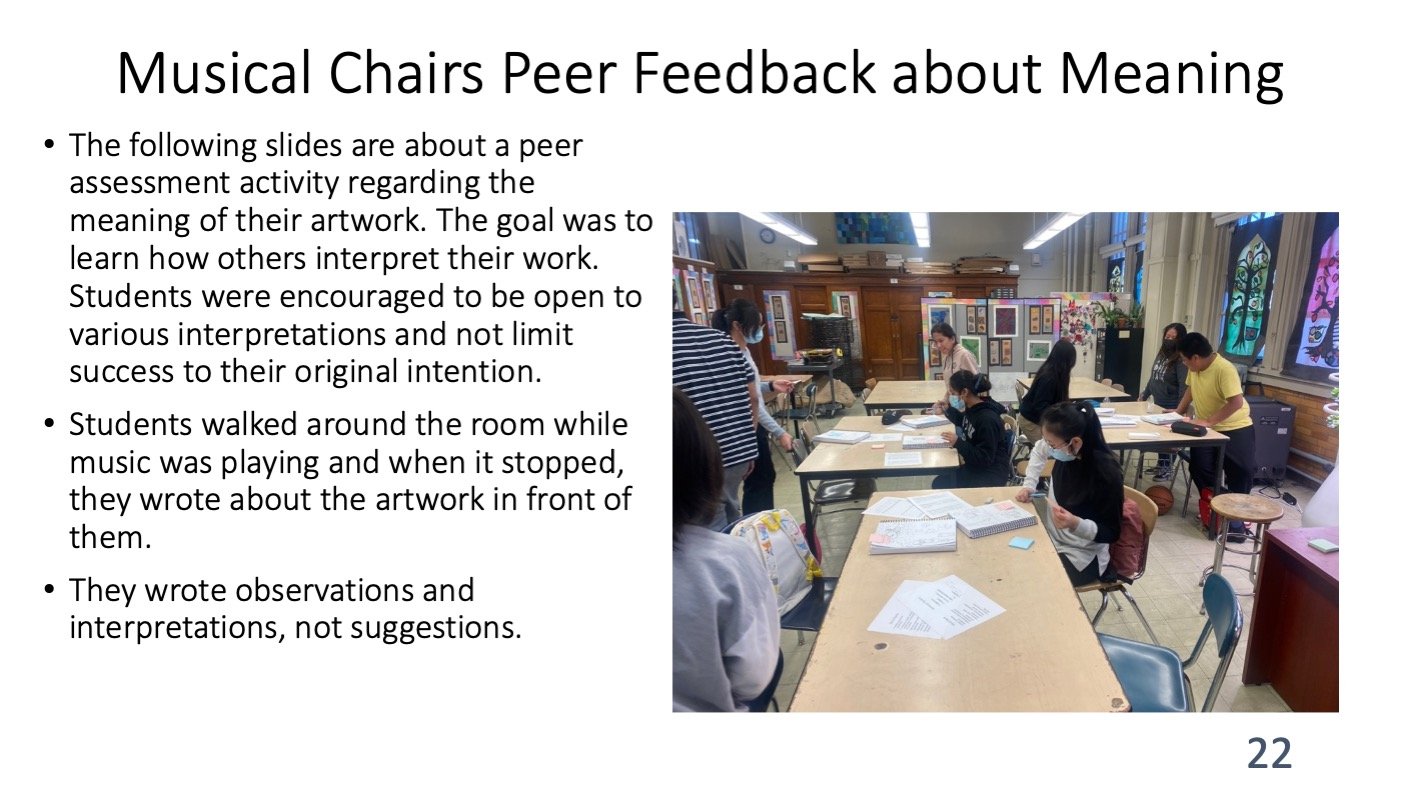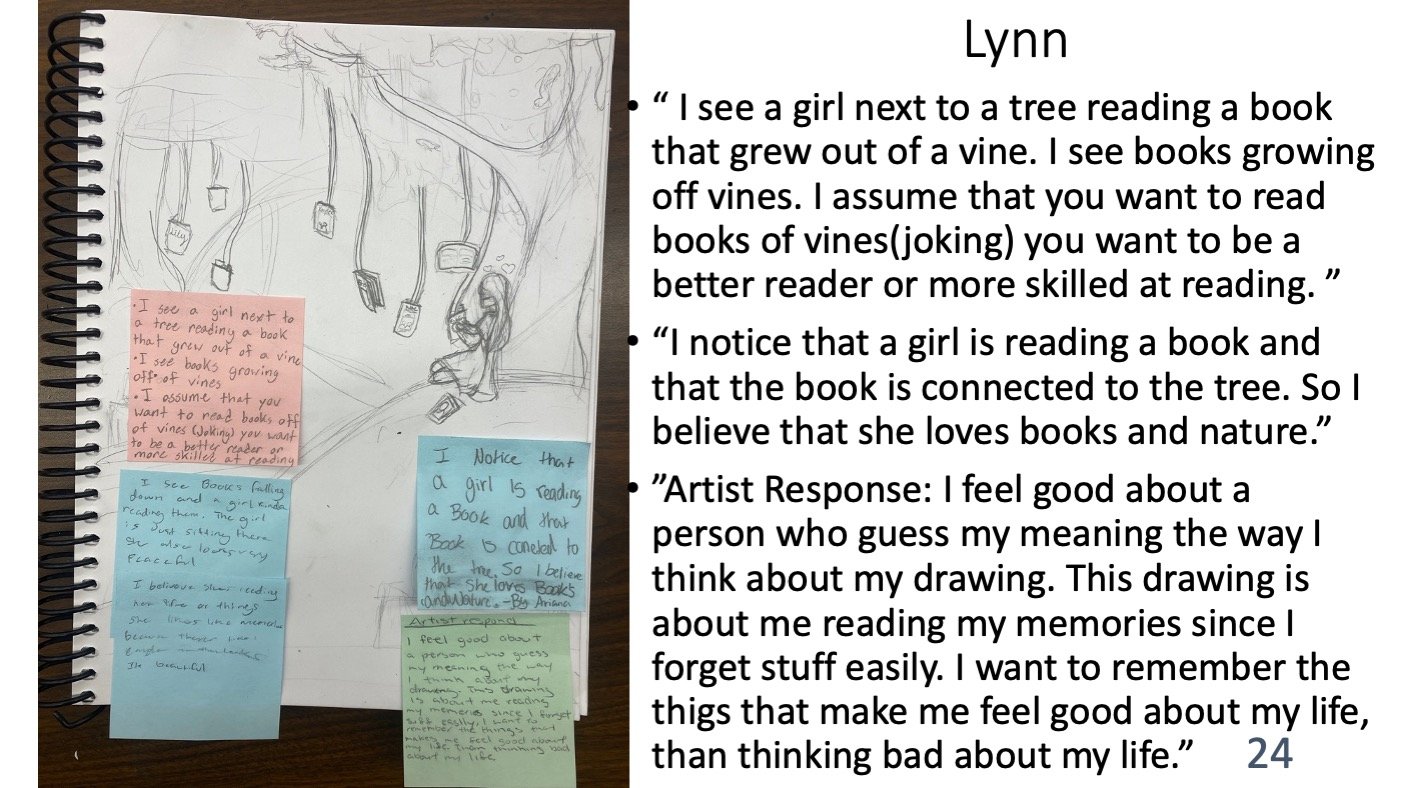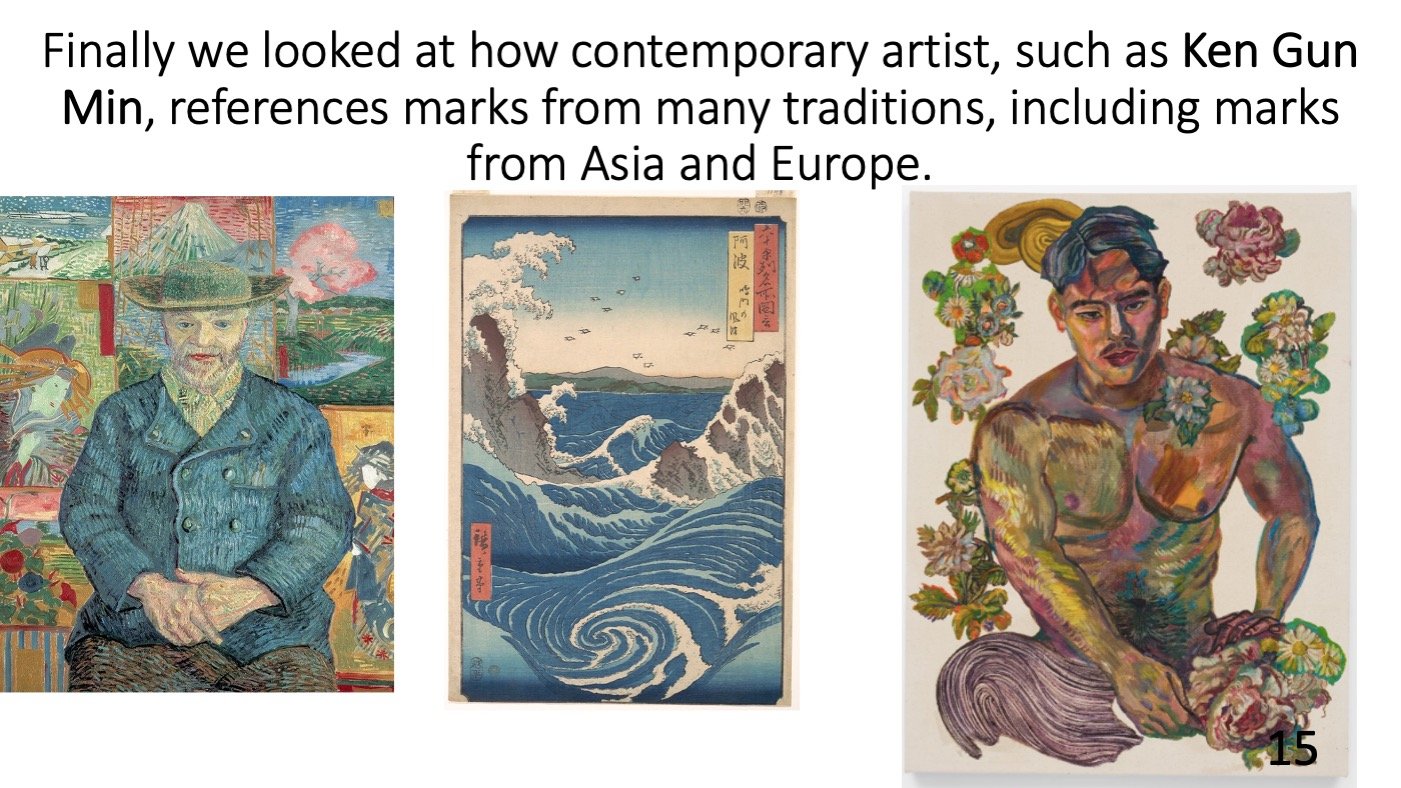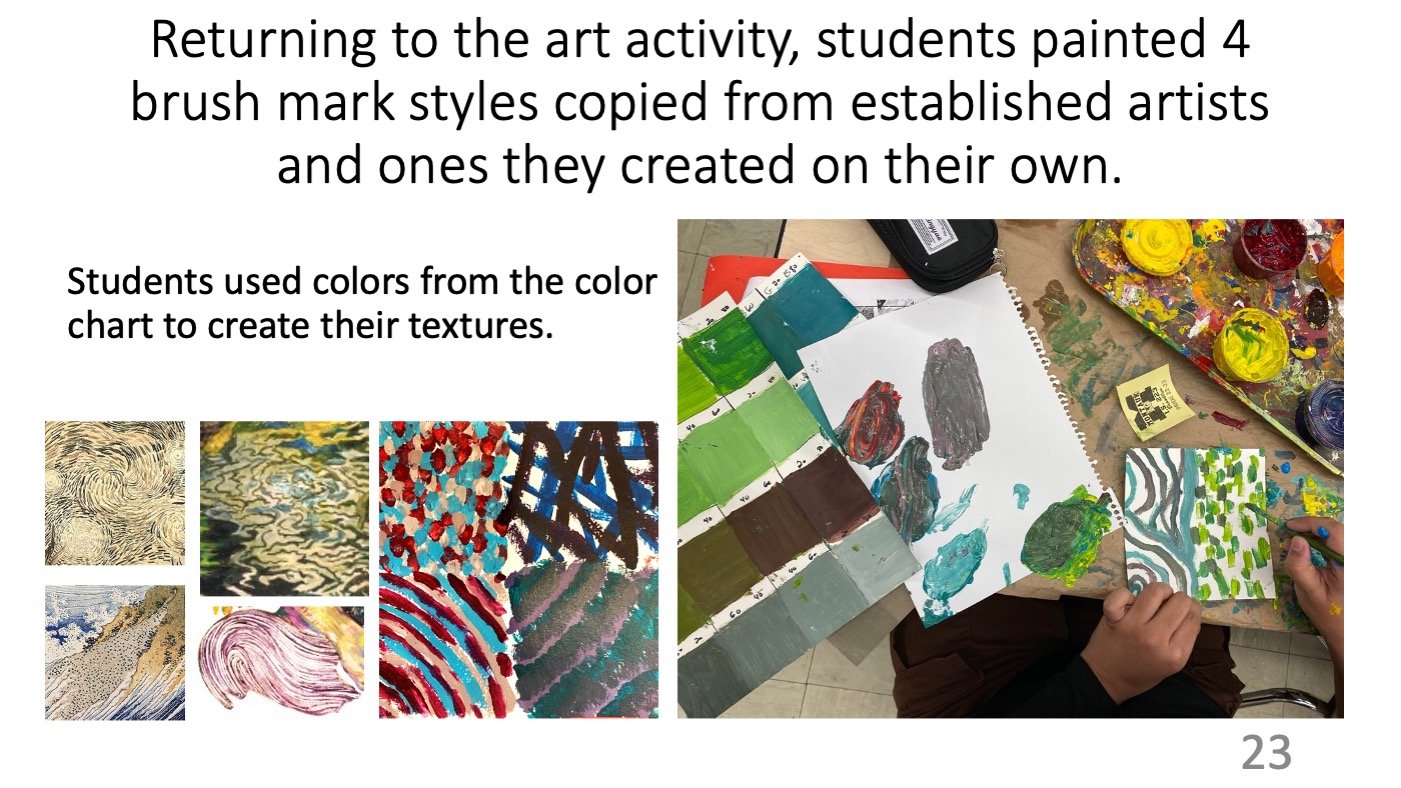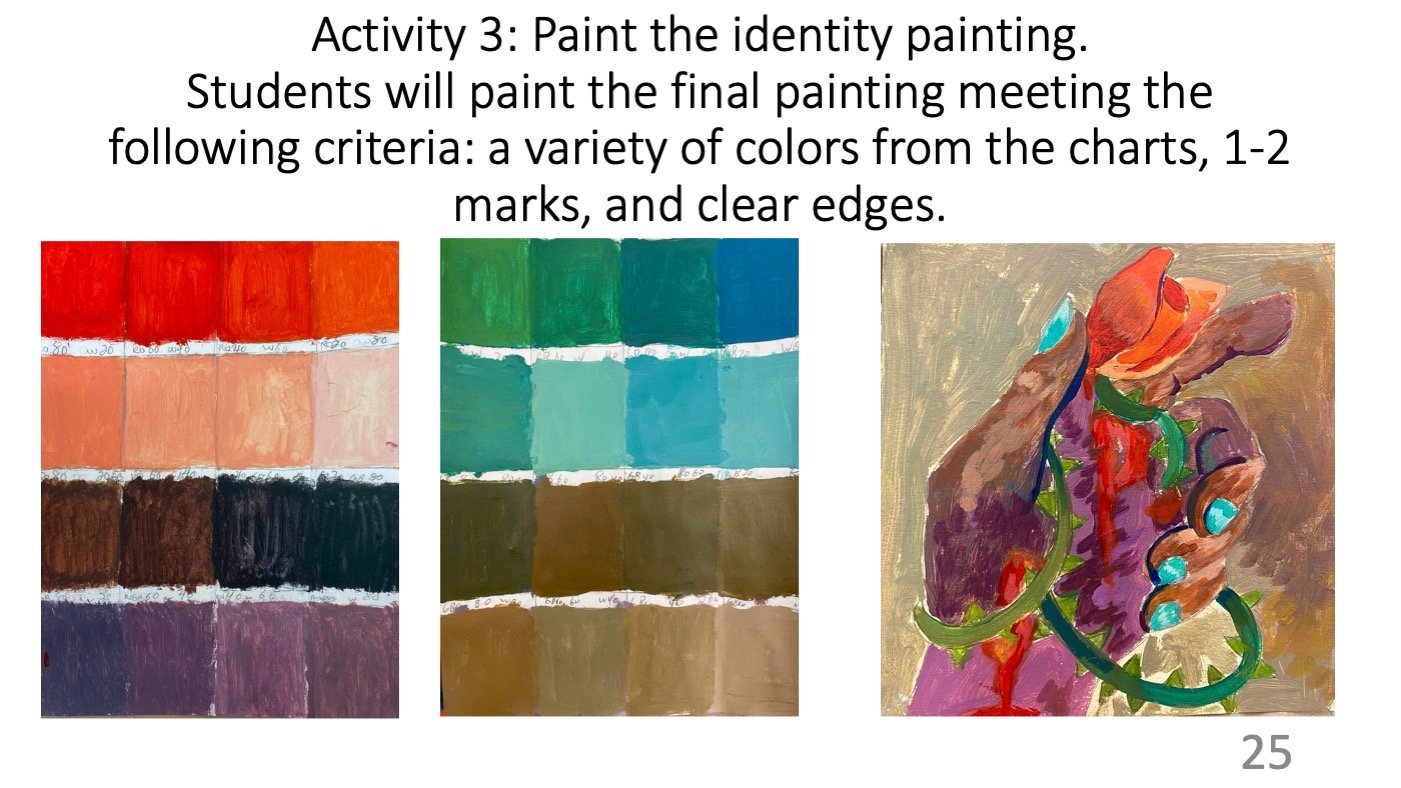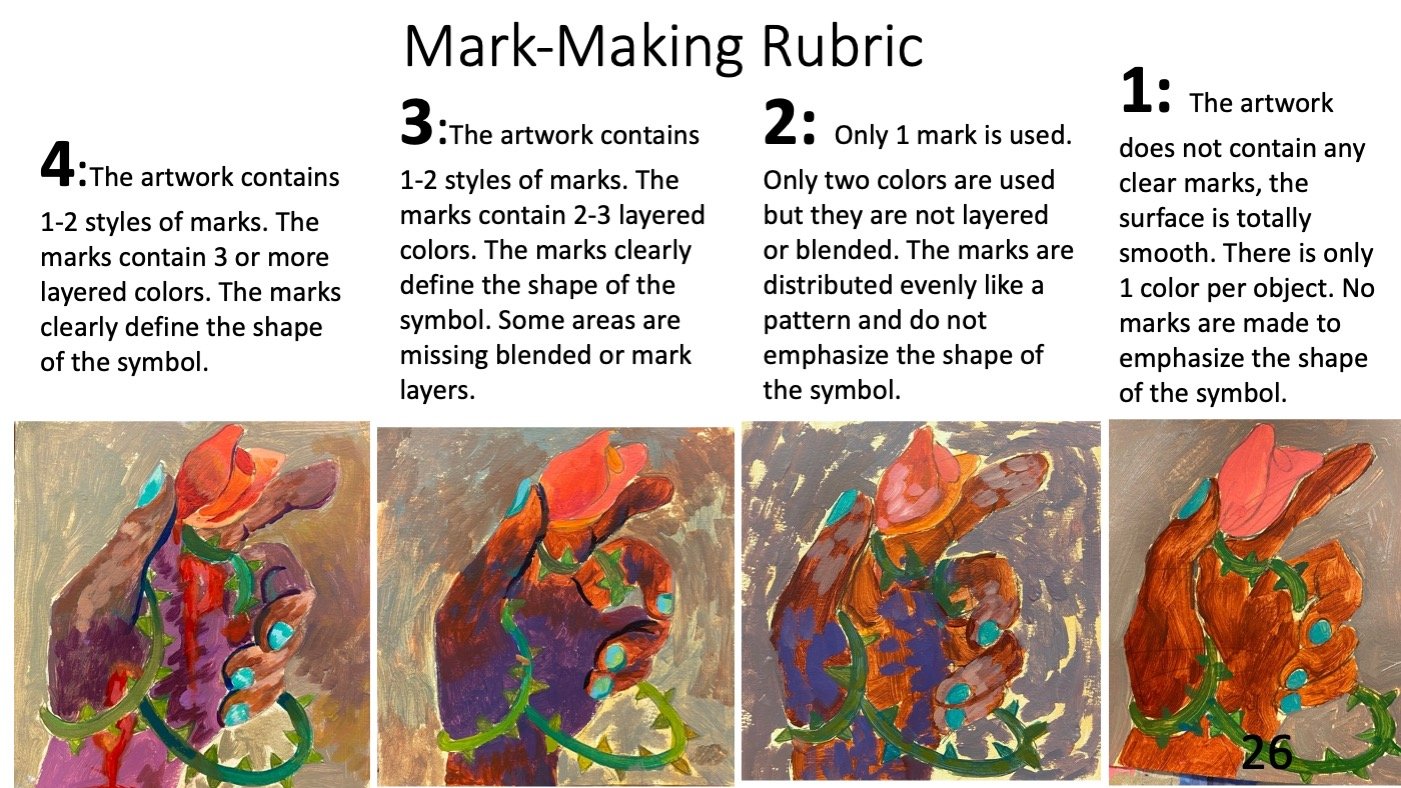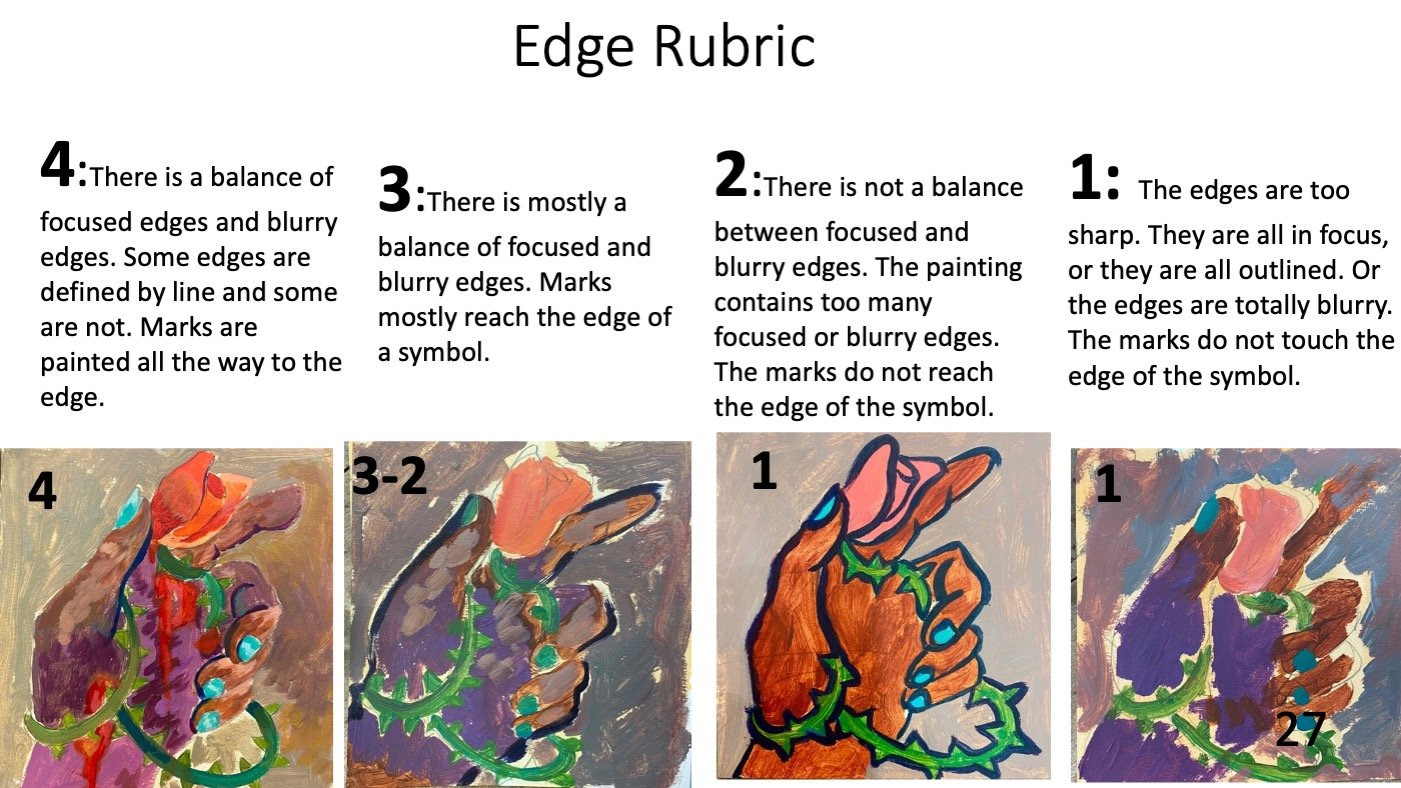For the 2022-2023 school year I worked with NYCDOE”s Office of Arts and Special Projects and the NAEA to develop an SEL (Social and Emotional Learning) and ED&I (Equity, Diversity and Inclusion) visual arts unit. This unit is written in Dr. Gholdi Muhammed’s Hill Framework, which includes lessons that address Identity, Skills, Intellect, Criticality and Joy. The culminating project consists of individual identity paintings, and a collective painting about the joys and struggles of being a middle school student.
The final project can be viewed here.
Dr. Muhammed’s Hill Framework.
Identity
Students will reflect on their own beliefs, interests, and values; they will explore symbols from nature and culture that express elements of their individual, family, and community identities. Essential Question: How can we show appreciation for cultures different than our own?
Skills
Skills: Students will create composite symbol paintings; individualized color pallets; and collaborative group painting. Student will create a composite symbol about their intersectional identities that demonstrate shape overlap and shape connection. Students will mix colors tertiaries, tints, compliments, and tint compliments to create paintings that use color to express identity or emotion. Students will create a 4-line metaphorical poem to express identity. Students will enact gestures with their body to tell a communal story about the joys and struggles of being a middle school student. Students will illustrate scenes and symbols that express group experiences of being a middle school student.
Intellect
Students will learn about the lives and work of the following artists: Jordan Casteel, Njideka Akunjili-Crosby, David Hammons, Frida Kahlo, Ken Gun Min, Amanda Phingbodhipakkiya, Faith Ringgold, Stephanie Shih, and Salman Toor.
Essential Questions: What are composite symbols? what are tertiary, complementary, chromatic, and neutral colors? How does Casteel use symbolism to express identity? How does Ringgold use text and composition to tell a narrative? How does David Hammons combine objects to express various parts of his identity? What is intersectionality? How does Gun Min use various references to express his cultural identity? How was European impressionism influenced by Japanese Ukiyo-e and ancient Chinese art? What is cultural appropriation? How does body gesture tell a narrative?
Critically
Students will explore the ways in which people of color challenge stereotypes and norms in their artwork; they will explore the ways that artists find healing in their work. Students will experience a sense of agency through artistic expression. Students will learn that they have intersectional identities and cannot be reduced to one part of their identity. Students will understand when appreciation become appropriation. They will learn how specific forms of oppression and racism informing artists work and how artist use joyful imagery to response to oppression. Students will generate images that express the joys and struggles of being a middle school student.
Joy
Students will experience the joy of self-discovery as they create art that represents themselves. They will experience the joy of mixing a wide range of colors and mark-making with acrylic paint. They will create joyful imagery in response to struggle as a way to attain agency through difficult experiences and to uplift others with similar struggles. They will experience joy in collaborating with their peers; and they will share their work to bring joy to the greater school community.
Socratic Seminar
September 25, 2022
This year’s ED&I focus is on cultivating students’ identity. The topic is based off of Gholdy Muhammad’s Cultivating Genius, which emphasizes drawing upon students’ identity for greater learning. As an introduction to the theme we observed Jordan Casteel’s recent painting, Field Balm and had a 15 minute class discussion structured in a socratic seminar format. Students first wrote observations and questions they had about the painting and then discussed their writing in small groups. One representative from each group shared a question with the class and responses were made using turn-key sentence starters. Below is a video of the group leaders “reenacting” the discussion, recorded during a lunch period.
There was a variety of interpretations about Field Balm, ranging from the concrete, “the plants are a healing balm for the purple rash on her leg” to the more symbolic, “she painted purple legs to match the flowers to show the person is one with nature.” Many students connected the Black Lives Matter and “explore” pin to Casteel’s values. As a teacher (and a white man), I tried to stay neutral and allow the students to share their opinions on content related to BLM. Many felt the purple skin meant appreciating skin tones of all kinds, one student stated “because it doesn’t matter what your skin color is.” I believe that statement to be well meaning but I am not sure it reflects Casteel’s values, or BLM at large. As I understand it, BLM highlights the specific experiences of Black people and does not prefer general “diversity” statements. However I want to honor my students’ interpretations and continue to question my own, since BLM is not rooted in my cultural experience. One personal values that I did make explicit was choosing a painting that showed BLM differently than how it is often presented in news and social media. Some students associate BLM with images of burning buildings and military attacks presented during quarantine. I want them to see Casteel’s BLM contextualization, of a person walking in nature. I want them to see an image that includes the restorative values of the community organization. We did not explicitly discuss this idea but I hope it offered them another perspective.
September 15, 2022
Students contemplated on a positive art experience they had in the past and the conditions that made it positive. The goal of this activity is to collectively identify the conditions we would like to create for our class this year. Each student wrote about their experience in a journal. (See previous post) For the first art unit students will draw plants from observation (see here). For this one-day activity they used their practice plant drawings as a metaphor to represent growth as an artist. We discussed the conditions that help plants grow such as soil, CO2, water and sunlight, and connected this metaphor to conditions that help artists grow. Since many students still think concretely, I emphasized that this activity is not a scientific diagram but a metaphor about a positive art experience. Each student wrote about specific conditions, such as a positive environment, art project theme, material, or instructor. They also had to explain how that positive condition made them feel. Below are their diagrams.
September 10, 2022
For the first journal assignment students wrote about a positive arts making experience. Then they wrote about the conditions of that experience. They were directed to consider the setting, content, material or instructor as factors for creating a positive learning environment.






